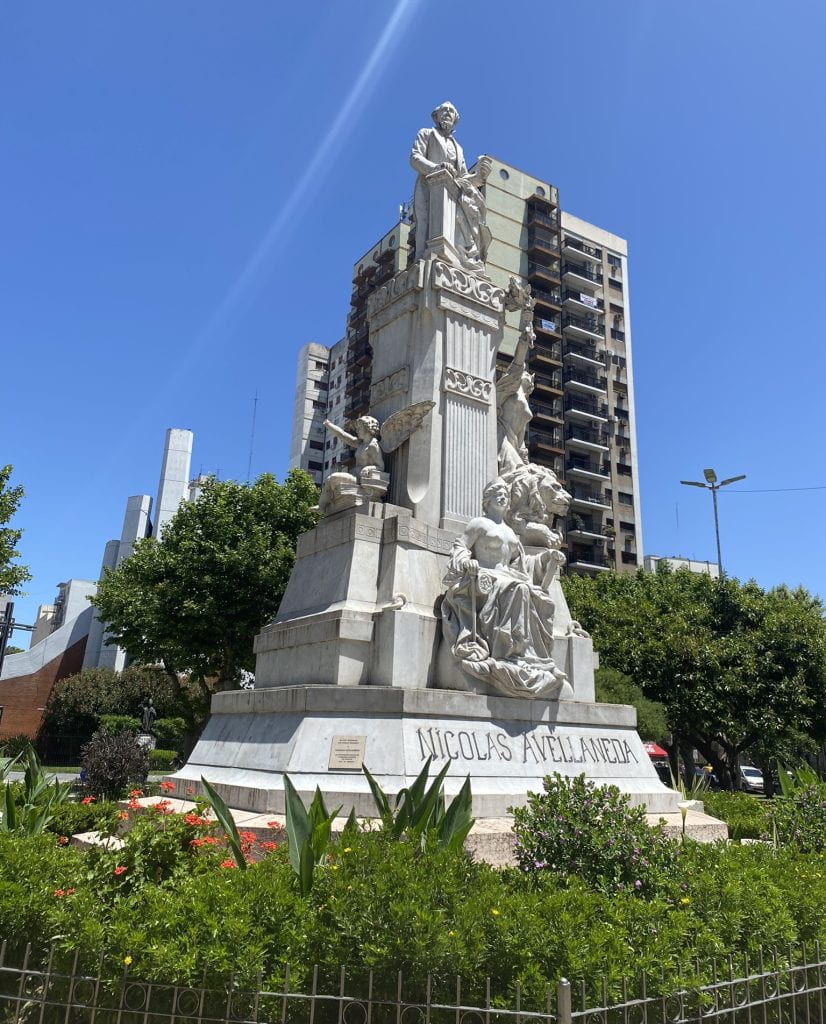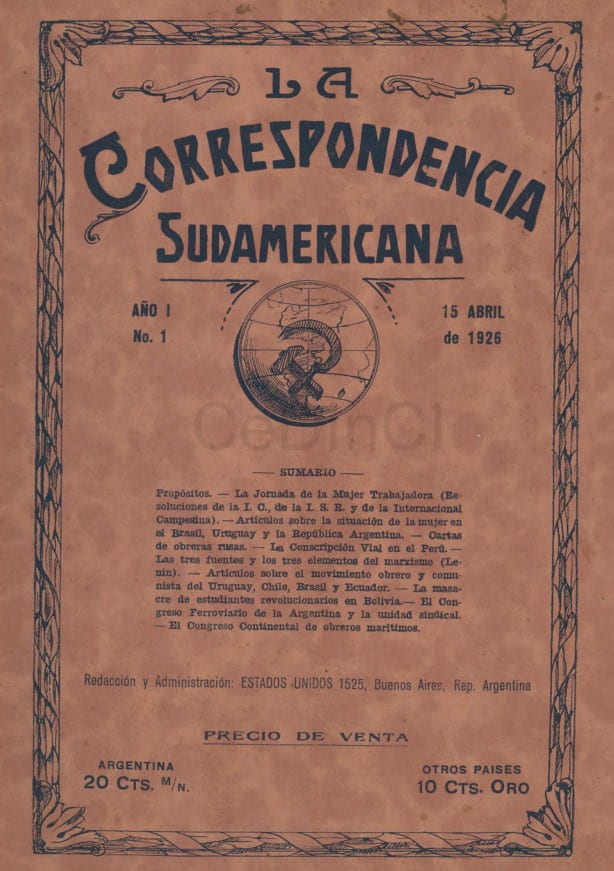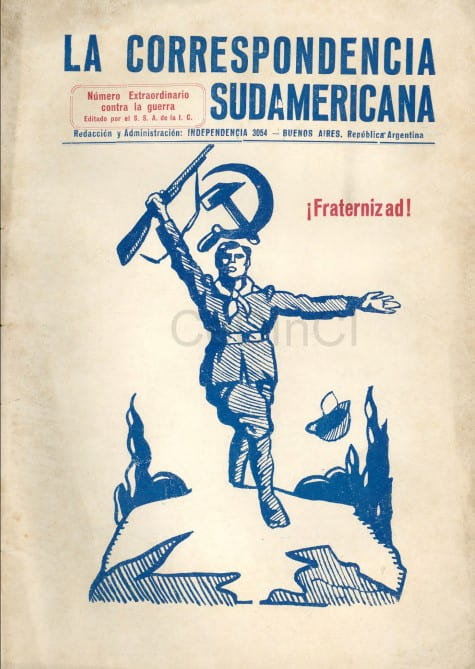By Jo Crow.
I travelled to Buenos Aires, Argentina, in November 2023 to research the First Conference of Latin American Communist Parties, a key transnational meeting that took place in 1929. I also presented my work at the Universidad de San Andrés, thanks to an invitation from the head of its History postgraduate programme Dr Eduardo Zimmermann, and met with Dr Gimena del Rio Riande, President of the Argentine Association of Digital Humanities, who has made critical contributions to global debates in this dynamic and burgeoning field.
I thought a lot about mobility and movement (or lack of it) on this trip. Immigration at Buenos Aires Ezeiza International Airport was quick and easy for me. The immigration officer politely asked about the purpose of my trip and was intrigued by my interest in Argentine history. We spent longer talking about the latter than we did about where I was staying or how long my stay would be. I wondered if such a swift and friendly border-encounter was enabled by my whiteness, academic title and British passport. I tried to picture what the process was like for the international delegates arriving in Argentina (by land or sea) for the Conference of Latin American Communist Parties nearly a century earlier. They may well have experienced class- and race-based barriers. Their biggest problem, however, was probably party-political affiliation: many delegates represented illegal and persecuted Communist Parties and travelled to Buenos Aires incognito, crossing borders without Argentine and other state authorities knowing.

The conference’s main discussion sessions took place in the premises of the Avellaneda district committee of the Communist Party of Argentina (PCA) (Jeifets and Jeifets, 2023). When I first started researching this transnational meeting, I imagined Avellaneda as a peripheral space, an industrial suburb on the remote outskirts of Buenos Aires. But, in fact, it is one of the most important municipalities of Buenos Aires Province – just as it was a hundred years ago. In the 1920s, it had not just one, but two major football stadiums. It was also home to the Central Produce Market, Argentina’s largest wholesaler, as well as major textile mills, meat-packing plants and grain-processing centres.
I walked from central Buenos Aires to Avellaneda to find the building of the PCA’s district committee. I also walked around central Buenos Aires, looking for the offices of La Correspondencia Sudamericana, the official mouthpiece of the South American Secretariat (SSA) of the Communist International, which organised the 1929 conference together with the PCA. The SSA was set up in 1925 with its headquarters in Buenos Aires, and the address of its magazine was printed on the front cover: first on Calle Estados Unidos, then, by the time of the conference, on Avenida Independencia (see images below). Both are major thoroughfares traversing this port city. Whilst many delegates at the conference represented Communist Parties (or SSA-affiliated parties) that were banned and operated underground elsewhere on the continent, the PCA and the SSA were functioning relatively openly. Being able to visit the offices where the SSA published its magazine in the 1920s and hearing the clamour of the space and watching people move through it helped me to appreciate how much the Communist Party was beginning to become part of everyday life in Buenos Aires in that period.


But the Argentina of 1929 was very different to the Argentina of today. In the early twentieth century, it ranked among the ten richest economies in the world (Scobie, 1971; Rock, 1993). In the twenty-first century, Argentina is routinely viewed as part of the ‘developing world’, ‘Third World’, or ‘Global South’ (Beattie, 2009). Its current inflation crisis and expanding recession – one in a succession of economic crises in modern Argentine history – have made headlines around the world. In the early twentieth century, by contrast, millions of people from Europe – especially from Italy and Spain – migrated to Argentina in search of a better life. The country was home to the largest number of immigrants after the United States. Now it is experiencing a wave of emigration to Europe and North America, as it did in in the early 2000s. This option is not available to all, however. More than 50% of the population are living in poverty (Calatrava, 2024) and don’t have the means to travel to the Global North.
The economic crisis is one of the reasons that right-wing libertarian Javier Milei won the presidential elections in November 2023; the election was the day I flew home from Buenos Aires. Since taking power, Milei has introduced ‘shock therapy’ reforms and issued a sweeping (and, according to some Argentine judges, unconstitutional) presidential decree deregulating vast swathes of the economy. This response to economic turmoil – standstill or, indeed, shrinking of the economy – impacts public cultural institutions, research institutes and universities enormously. Some recently appointed staff have been dismissed, many of those with job ‘security’ have seen their salaries suspended, and funding for doctoral scholarships has been slashed (see the recent article in Nature: ‘Despair’: Argentinian researchers protest as president begins dismantling science).
Just before leaving Argentina, I met with Gimena del Rio Riande, Researcher at CONICET (Consejo Nacional de Investigaciones Científicas y Técnicas) and Director of the Digital Humanities Lab at the IIBICRIT (Instituto de Investigaciones Bibliográficas y Crítica Textual). We spoke about the economic crisis and people feeling trapped. We also spoke about the state of the field of Digital Humanities – the huge potential for doing exciting research (for example, having on-line access to medieval texts and being able to read them as a full corpus in new ways) but also the limitations and problems, not least the emphasis on ‘thinking big’, which sometimes risks sidelining the concrete detail, the specifics of our primary source materials, or the focused questions (about people, places or texts) that interest us as individual researchers. Large-scale, multi-partner teams can move things on at a tremendous pace, but individual interventions and viewpoints can get lost, overlooked or stuck within these.
We also discussed the linguistic and social inequalities bound up in a field that continues to be dominated by the Anglophone world and often depends on expensive infrastructures. Dr del Rio Riande has published extensively in both English and Spanish on some of these issues (for example, Global Debates in the Digital Humanities, Digital Humanities Quarterly, and ¿En qué lengua citamos cuando escribimos sobre Humanidades Digitales?). We hope to welcome her here to the School of Modern Languages and MMB in the summer, to give a talk on Digital Humanities in Latin America and lead a workshop on open research practices.

